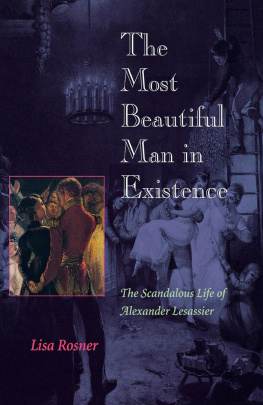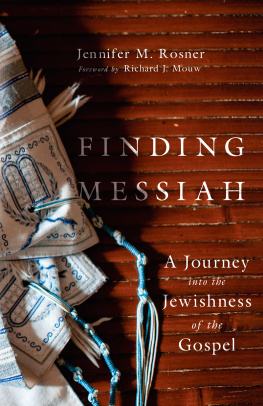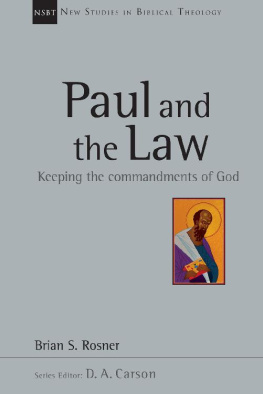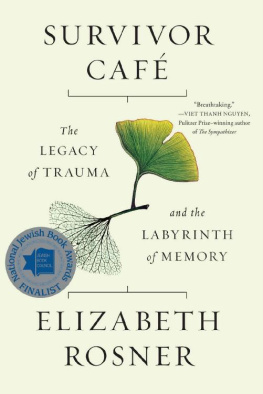PREFACE
A Journal of Life

In 1833 Catherine Jane Hamilton, ne Crokatt, returned from India to Edinburgh to seek a divorce from her husband, Alexander Lesassier Hamilton, M.D., then surgeon to the 41st Regiment. In Scotland a divorce could be obtained if the plaintiff could prove the defendant guilty of adultery, and it was the task of Catherines solicitor, John Gibson, to obtain that proof. To assist Gibson, Catherine turned over to him a trunk containing her husbands personal papers, which he perused with close attention. Dr. Alexander Hamiltons agent tried in vain to retake possession of the trunk. Catherine won her suit, and then brought another action against her former husband, this time for aliment, or support, from the time she left him until the day the divorce was granted. Pending the outcome of this second legal action, the trunk was deposited in the library of the Royal College of Physicians of Edinburgh. Catherine won this suit, too, but took no steps to pick up the trunk. Alexander died in 1839 without ever returning from India. The trunk remained in the library of the Royal College, dutifully listed in its catalogue of manuscripts but otherwise untouched, until 1987, when the newly appointed archivist, Joy Pitman, was given the task of turning the mass of journals, rolled-up letters, and family papers into a properly catalogued collection. At that point the story of Alexander Lesassier (as I will refer to him for most of the book), which started in its most literal sense two hundred years earlier, was once again made available.
It is a remarkable story, told in fascinating detail: a passage from youth to maturity that is at the same time a window into the social history of Great Britain at the dawn of the modern era. It is not a conventional story of a Great Doctor, although some great doctors turn up in its pages; nor is it a unified narrative about early promise, continued industry, eventual success and perfect happiness in ones profession. Indeed, such a story would be anachronistic, for men of the early nineteenth century did not identify themselves wholly in terms of their occupations: confronted with the modern question What do you do? they would have been unable to give the modern brief answer. For Lesassier, the relevant question was not What do you do? but Who are you? He found his answers in novels, in his own sexuality, in social relations, and in warfare, as well as in his career of medicine. His journals, so carefully preserved in his trunk, were his great aids in this endeavor, and his process of self-construction, to use a modern literary term, continued throughout his life and was never entirely completed. It is a work of very great labour and difficulty, as James Boswell noted, to keep a journal of life, occupied in various pursuits, mingled with concomitant speculations and reflections, and we can see this work as the great unifying effort of Lesassiers life.
The result is a richly detailed portrait of Lesassiers life and times, that much more engrossing because it deals with so many matters long considered vital to the shaping of the modern world. Lesassier was born in 1787 in Scotland, at a time crucial to the formation of the distinctive national identity of Great Britain. It is significant that his first professional engagement was as assistant surgeon in the Peninsular War, for the Napoleonic Wars were themselves important in forging modern British identity. So, too, was the ever expanding British presence in India and Afghanistan, and the First Afghan War, during which Lesassier died in 1839, is one of many markers of the growth of British colonial power. In following his life, therefore, we are also tracing Great Britains path to the British Empire, and if Lesassiers path takes us through Portugal and Edinburgh, so too did a nations evolution.
There are other paths we can follow through history. Historians have debated the influences at work in the professionalization of medicinethe role of hospitals, medical schools, professional journals, and national licensingas well as the way that professionalization has, in turn, influenced the conditions of medical education and practice. These discussions have usually assumed, rather than investigated, the personal characteristics of the practitioners involved. Whether professionalization is said to have started at the beginning of the eighteenth century or the end of the nineteentheven whether the practitioners involved are male or femaleall medical people are presented as desirous of improvements in medicine, to borrow a phrase from a London medical student, all ready to adopt the medical persona as the distinctive stamp of their identity, all possessing both the ability and inclination to take proper advantage of the newly formed hospitals, medical schools, journals, and licenses. And yet if we take seriously, as we must, the idea that institutional structures lead to professionalization, we must also take seriously the idea that without those structures, professionalization cannot take place, or can take place only partially, or by fits and starts. As Alexander Lesassiers story reveals, a medical persona was not easily acquired; only some of the vast number of traits a young man might have could be molded to accommodate it; and the recalcitrance of the human personality to fit that mold must be factored into all subsequent histories of medical professionalization.
So too must the pervasiveness of romantic expression. Lesassier was not interested in the Romantic writers properly so called; there is no mention in his journals of Byron, Keats, or Shelley. He was, however, intensely interested in novels spanning the period from Fielding through Austen to Scott, and he actually wrote and published a romantic novel, Edward Neville. A penchant for reading oneself into romances, whether in books or on stage, has been traditionally ascribed to female readers and writers, but many men, too, longed to enliven the circumstances of their lives and turned to novels as naturally as we might turn to television. They also turned to the consumer culture that came to the forefront of social life after the Industrial Revolution. Historians have sometimes assumed that the proliferating shop windows and, later in the century, department stores, were aimed at women, but Lesassiers diaries remind us that men, too, could be enthusiastic consumers of the new material culture.
Yet if the story of Alexander Lesassier can be an illuminating guide to so many areas of human life, it can also be an exasperating tribute to the fact that historical actors are often completely unaware of what historians have labeled the main developments of their age, even those that affect them most directly. Historical biography is a dialogue between the life of its subject and his or her times. The generation to which Lesassier belonged came of age in the eighteenth century and had to adjust to the changing expectations in the nineteenth. Professional identity, nascent in 1780, was firmly established by 1840; the sexual mores of Tom Jones were under attack from the early Victorians; and though self-construction might take a lifetime it could not adapt, chameleon-like, to every change in social color. The first five chapters of this book trace the formation of Lesassiers character and prospects as a young gentleman on his way to making his fortune. The next three tell the story of his years as an army surgeon in the Peninsular War, where both his medical training and his personal characteristics contributed to his professional success. But success in one endeavor does not guarantee it in the next. The last four chapters in the book explore Lesassiers often rocky transition to civilian life. Marked by financial impropriety, racked with scandal, his years in private practice in Britain were also filled with the self-reflection that too often attends misfortune. For that reason, we may allow Lesassier the last word in his dialogue with his times.












